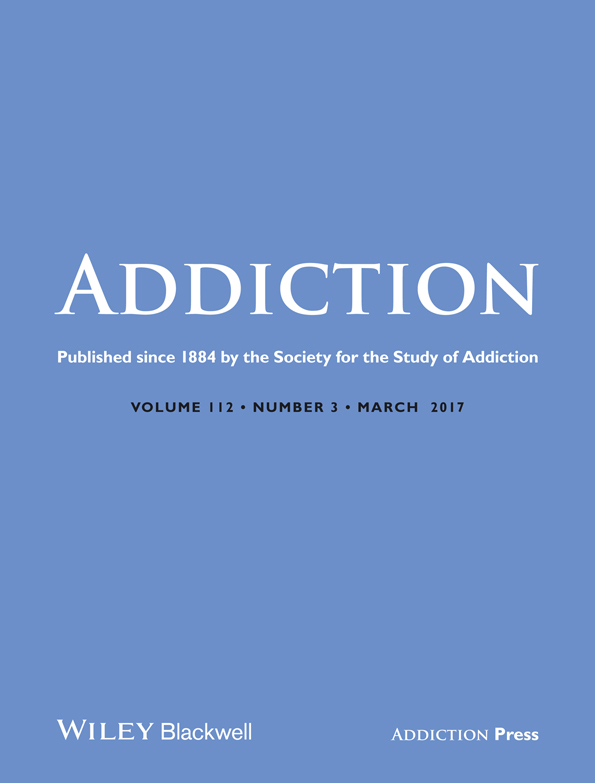Experimental study designs examining social context and smoking: scientific challenges and considerations
Abstract
The impact of each of the different underlying social mechanisms and their additive effects on risk behaviour need to be examined. To accomplish this, consideration of an interdisciplinary, theoretical model and the application of other types of methodological designs or combination of designs are recommended.
Dimoff & Sayette 1 point out the need for theory-driven experiments to identify the mechanisms of social context and smoking. Four additional considerations regarding research on risk behaviour such as smoking are discussed below.
First, the existing experiments focusing on smoking 2-10 focus predominantly on the presence of an unfamiliar peer and manipulation of his/her smoking behaviour. Results show that individuals are influenced by this stranger's behaviour, which is specified as modelling, imitation or mimicry. However, whether this mechanism occurs unconsciously and automatically 11, or consciously because of possible advantages 12, has not yet been clarified. It is also important to test other types of social influence mechanisms, e.g. mere presence, (coercive) pressure or norms of others (descriptive, injunctive, popularity norms). It is also necessary to test two or more mechanisms simultaneously to understand their additive effect, e.g. passive and active social influence 8. The focus needs to be upon both encouragement and discouragement of others to engage in risk behaviour 7, 13. The duration and frequency of social influence also need to be investigated. For example, frequent verbal peer discouragement targeted at a daily smoker for a short period of time evokes resistance 13 and may result in a boomerang effect.
Secondly, other processes related to social context besides influence are (de-)selection 14 and demographic propinquity 15. People may select each other based on similarity of particular individual characteristics (e.g. smoking or neurocognitive or personality factors related to smoking), 16 or may exclude/de-select others because of dissimilar characteristics. Also, people may have more opportunities to interact with others in the same region, community or neighbourhood and this may initiate adaptation resulting in similarities. These processes have been neglected in experimental studies.
Thirdly, few moderators have been considered in these experiments on smoking (participant's/confederate's level of smoking, sex, arousal-affiliation, social pressure, nature of interaction) and mediators or moderators need more consideration. Although Dimoff & Sayette 1 provide useful suggestions, an interdisciplinary, theoretical model that integrates the role of genotypes, personality and neurocognitive factors and these social processes (influence, de-selection, selection), including person–environment interplay, seems to be lacking. The characteristics of the individual and others, and the environmental and cultural setting, should be included in the model. For example, a recent social network study on aggression shows that the environmental peer context, such as popularity norms (the extent to which certain behaviour is associated with popularity), in a classroom affects selection and influences processes. In contrast, descriptive norms (perceived average behaviour of all others in a given setting) appear not to do so 17.
Fourthly, experiments enable us to pinpoint underlying mechanisms, but careful consideration should be given to the appropriate methodological design, taking into account its drawbacks and the specific research question. The existing experiments are limited to unfamiliar others and dyads. Future experiments should test the impact of familiar others, such as people with whom we interact on social media or multiple types of peers (friends, acquaintances, etc.); even though it may be difficult and/or unrealistic to manipulate the behaviour of these other(s) and to include groups. Also, existing experiments focus on smoking continuation because daily-smoking college/university students are included, and there are ethical constraints when examining initiation or experimentation involving younger age groups. Currently, experiments do not therefore provide complete insight into the social context and the precise underlying mechanism. To overcome some of these limitations, other methodological designs need to be considered, or a combination of designs to tap into the strengths of each design. For example, observational studies would be very appropriate to test the underlying mechanisms in existing friend dyads or groups 18. Also, longitudinal social network designs using recent statistical techniques 19 allow simultaneous analysis of (de-)selection and influence processes, and further combination with observational/experimental studies offers a deeper and more precise understanding. In addition, combining quantitative and qualitative approaches may be beneficial; for example, an experiment to induce reasoning and verbalized attitudes combined with discourse analysis 13. The responses received in an experimental design might be more ‘natural’ because individuals are unaware that they are participating in a study on smoking, thus reducing the tendency to provide socially desirable responses.
In conclusion, future studies need to provide insights into whether existing theories on social influence and risk behaviour require adjustment in order to account for the role of individual and environmental/contextual factors. Such insights will also have fundamental implications for the design of effective prevention and intervention programmes, especially if it is possible to identify the precise underlying mechanism(s).
Declaration of interests
None.




